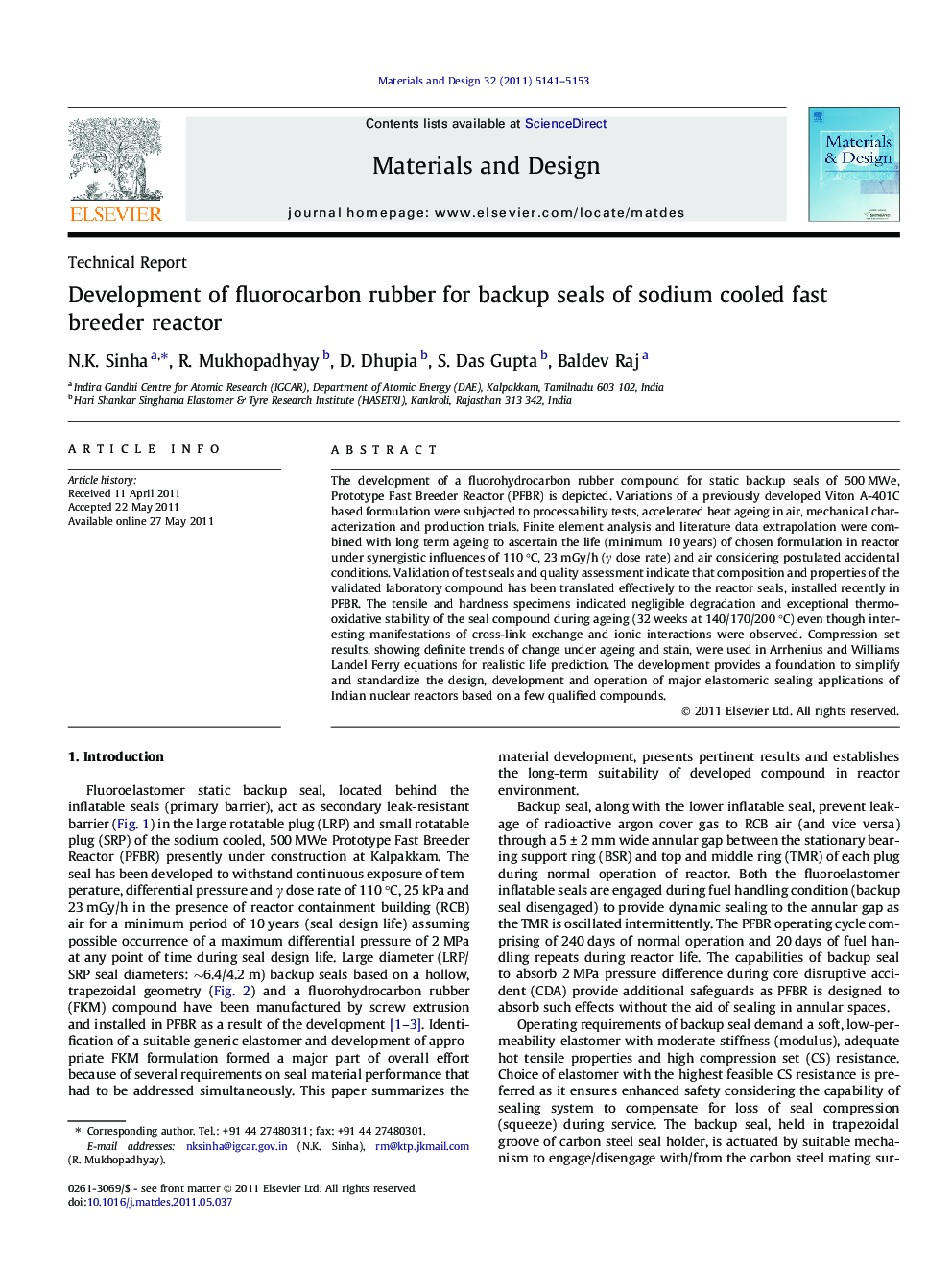| Article ID | Journal | Published Year | Pages | File Type |
|---|---|---|---|---|
| 831251 | Materials & Design (1980-2015) | 2011 | 13 Pages |
The development of a fluorohydrocarbon rubber compound for static backup seals of 500 MWe, Prototype Fast Breeder Reactor (PFBR) is depicted. Variations of a previously developed Viton A-401C based formulation were subjected to processability tests, accelerated heat ageing in air, mechanical characterization and production trials. Finite element analysis and literature data extrapolation were combined with long term ageing to ascertain the life (minimum 10 years) of chosen formulation in reactor under synergistic influences of 110 °C, 23 mGy/h (γ dose rate) and air considering postulated accidental conditions. Validation of test seals and quality assessment indicate that composition and properties of the validated laboratory compound has been translated effectively to the reactor seals, installed recently in PFBR. The tensile and hardness specimens indicated negligible degradation and exceptional thermo-oxidative stability of the seal compound during ageing (32 weeks at 140/170/200 °C) even though interesting manifestations of cross-link exchange and ionic interactions were observed. Compression set results, showing definite trends of change under ageing and stain, were used in Arrhenius and Williams Landel Ferry equations for realistic life prediction. The development provides a foundation to simplify and standardize the design, development and operation of major elastomeric sealing applications of Indian nuclear reactors based on a few qualified compounds.
► Negligible chemical degradation of seal compound during ageing (in unstrained state) in air at 140/170/200 °C for 32 weeks. ► Cross-link exchange, Joule–Gough effect and ionic interaction during ageing in unstrained state. ► Enhanced physical/chemical degradation of compound during ageing under strain. ► Capability of compound to withstand heat, radiation, air and mechanical load in reactor for 10 years. ► Negligible chemical dose rate effect and gas evolution from compound during seal operation.
